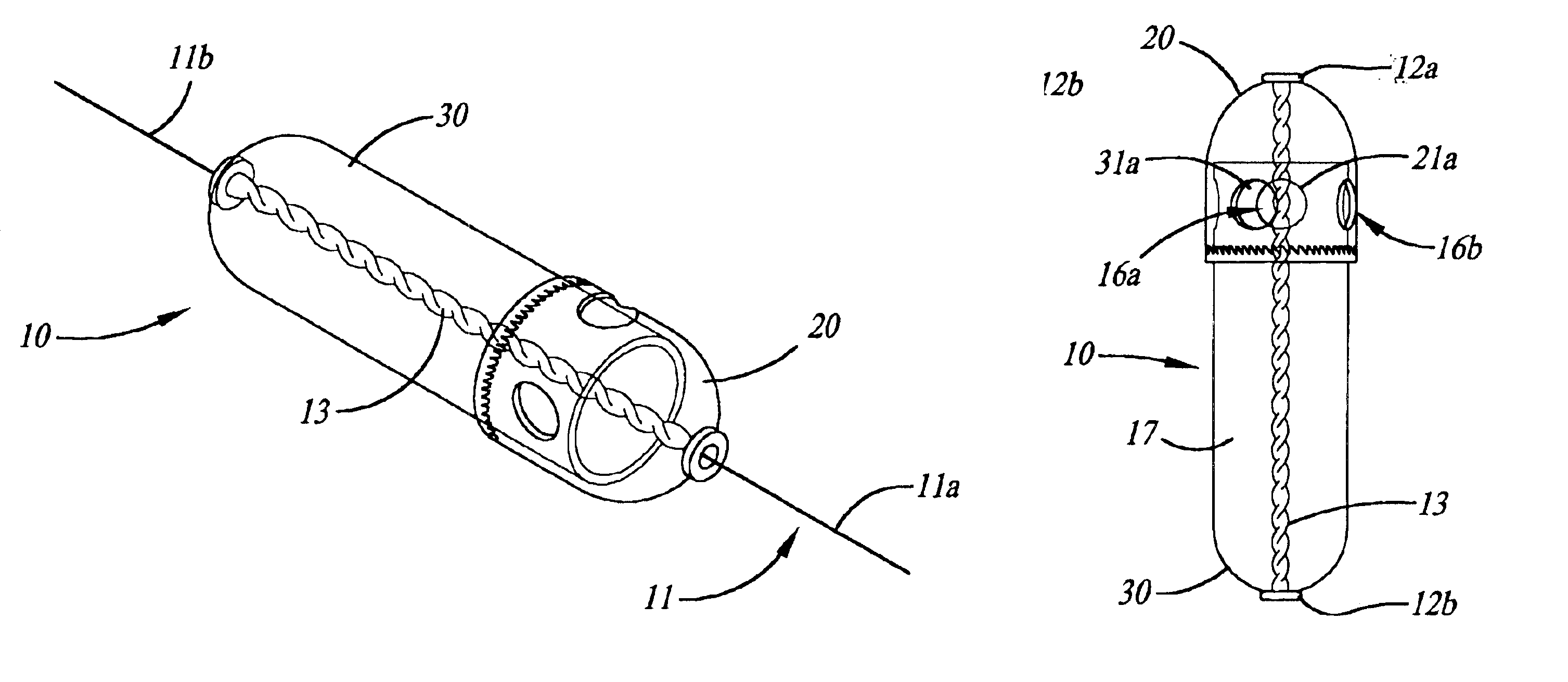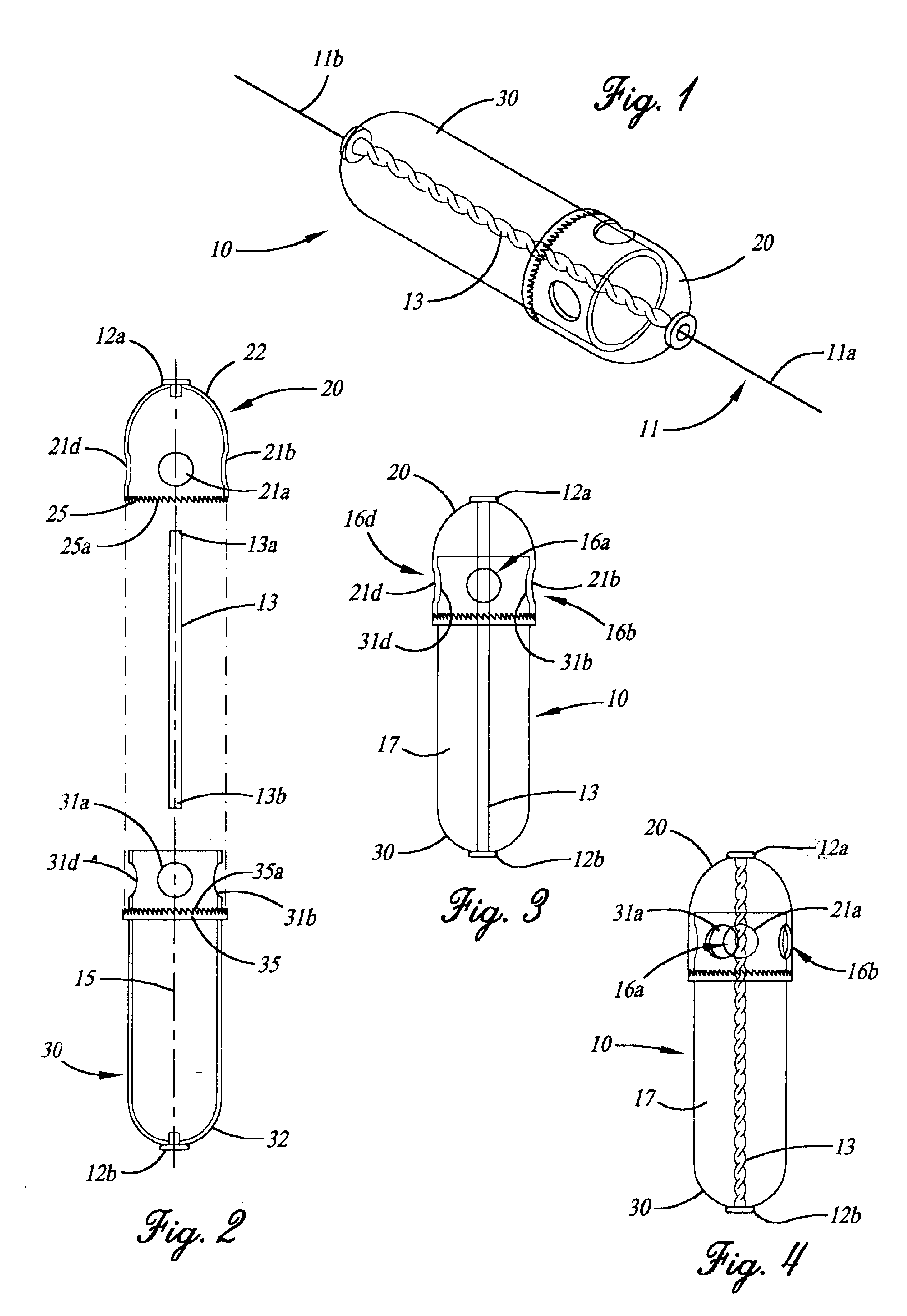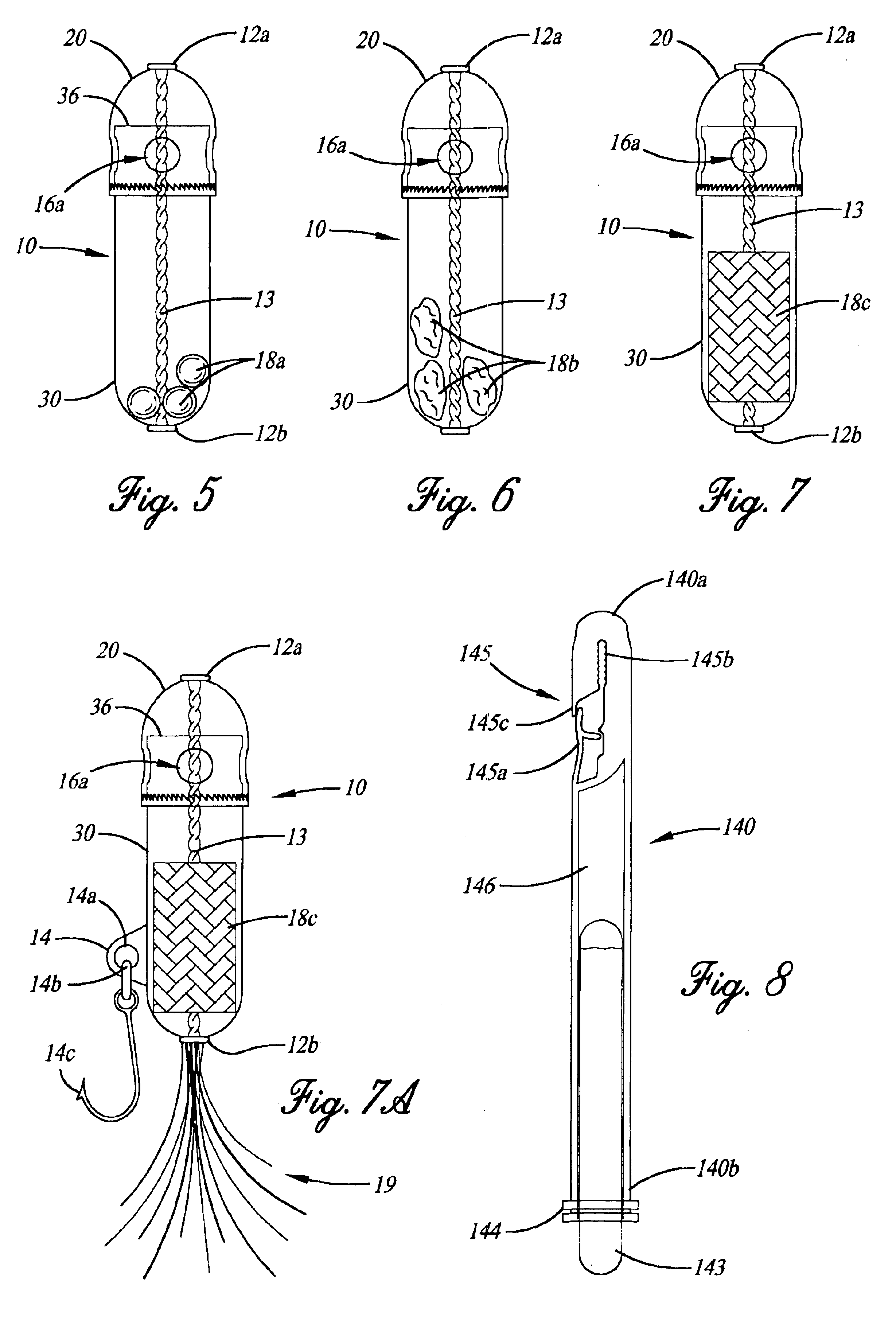Adjustable buoyancy floating fish lure
a technology of buoyancy and fish, which is applied in the field of adjustable buoyancy floating fish lures, can solve the problems of scaring fish away from the hook, cumbersome size and color, and inability to adjust the hook setting ability,
- Summary
- Abstract
- Description
- Claims
- Application Information
AI Technical Summary
Benefits of technology
Problems solved by technology
Method used
Image
Examples
second embodiment
FIGS. 8-10 illustrate the adjustable buoyancy floating fish lure 100 of the present invention, wherein a hollow attaching rod 140 is centrally disposed through fore and aft chamber sections 120, 130 that is held in position by threaded end cap 150. The fore and aft chamber sections 120, 130, as well as the hollow attaching rod 140 and threaded end cap 150, are all preferably made of a transparent and colorless plastic which, due to the light weight of plastic and the absence of color, permits the fish lure of the present invention to display a covert natural appearance beneath the surface of the water.
As illustrated in FIG. 8, the hollow attaching rod 140 of the second embodiment of the present invention has first and second ends 140a and 140b, respectively. Strategically positioned at the first end 140a of the hollow attaching rod 140 is a line attachment means 145. Unlike the first embodiment of the present invention, fish lure 100 connects to the fishing line (not shown in FIGS. ...
first embodiment
Alternatively, to increase the buoyancy of the fishing lure 100 of the present invention, the size or area of the valve aperture openings 116a-d must be reduced as described above with respect to the present invention as depicted in FIG. 4. By reducing the size of the aperture valve openings, less water is accepted into the interior chamber 117, therefore allowing more air to remain within the interior chamber 117. For instance, in the situation where the buoyancy window 121a of the fore chamber section 120 only partially overlies the buoyancy window 131a of the aft chamber section 130, a relatively small valve aperture opening 116a is created when compared to the aperture valve opening 116a as depicted in FIGS. 9 and 9a. Although not shown in the drawings, to cause the fish lure of the present invention to act as a bobber and always float on top of the surface of the water, the fore and aft chamber sections 120, 130 are positioned relative to each other so that neither buoyancy win...
PUM
 Login to View More
Login to View More Abstract
Description
Claims
Application Information
 Login to View More
Login to View More - R&D
- Intellectual Property
- Life Sciences
- Materials
- Tech Scout
- Unparalleled Data Quality
- Higher Quality Content
- 60% Fewer Hallucinations
Browse by: Latest US Patents, China's latest patents, Technical Efficacy Thesaurus, Application Domain, Technology Topic, Popular Technical Reports.
© 2025 PatSnap. All rights reserved.Legal|Privacy policy|Modern Slavery Act Transparency Statement|Sitemap|About US| Contact US: help@patsnap.com



